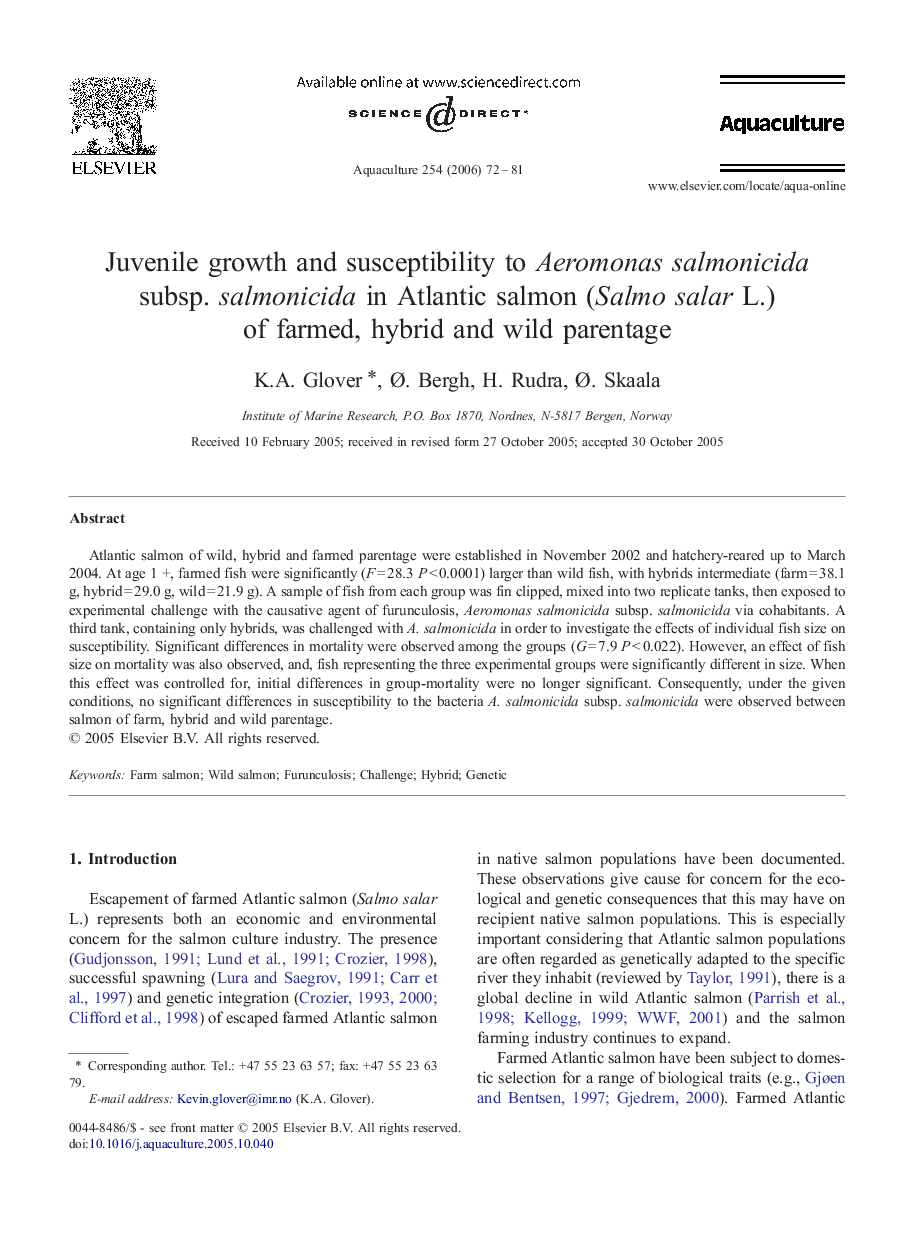| Article ID | Journal | Published Year | Pages | File Type |
|---|---|---|---|---|
| 2425978 | Aquaculture | 2006 | 10 Pages |
Atlantic salmon of wild, hybrid and farmed parentage were established in November 2002 and hatchery-reared up to March 2004. At age 1 +, farmed fish were significantly (F = 28.3 P < 0.0001) larger than wild fish, with hybrids intermediate (farm = 38.1 g, hybrid = 29.0 g, wild = 21.9 g). A sample of fish from each group was fin clipped, mixed into two replicate tanks, then exposed to experimental challenge with the causative agent of furunculosis, Aeromonas salmonicida subsp. salmonicida via cohabitants. A third tank, containing only hybrids, was challenged with A. salmonicida in order to investigate the effects of individual fish size on susceptibility. Significant differences in mortality were observed among the groups (G = 7.9 P < 0.022). However, an effect of fish size on mortality was also observed, and, fish representing the three experimental groups were significantly different in size. When this effect was controlled for, initial differences in group-mortality were no longer significant. Consequently, under the given conditions, no significant differences in susceptibility to the bacteria A. salmonicida subsp. salmonicida were observed between salmon of farm, hybrid and wild parentage.
